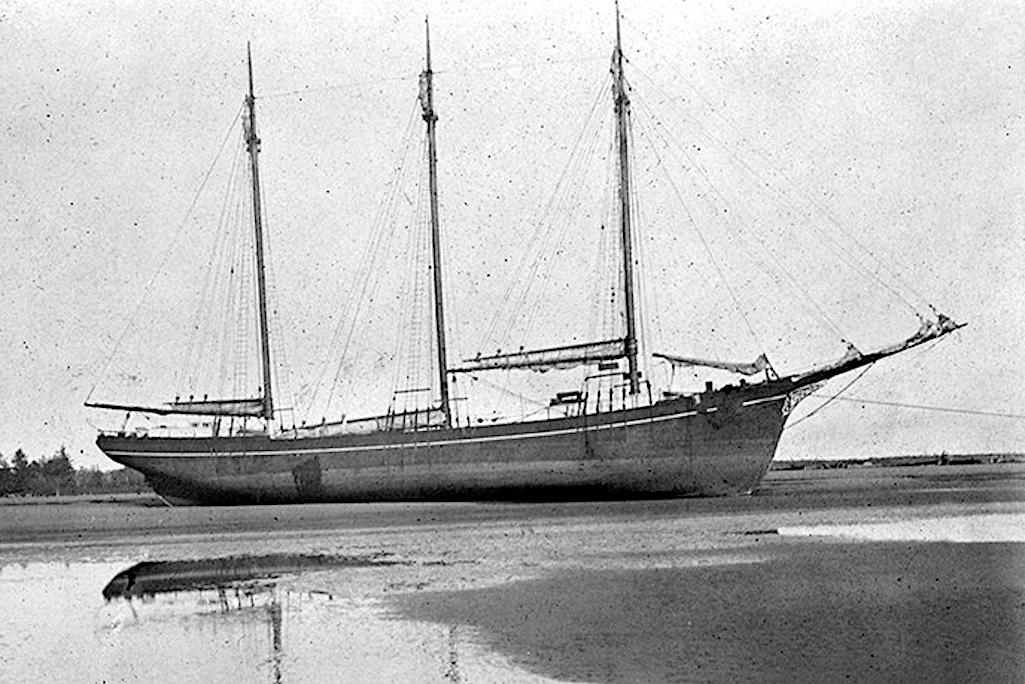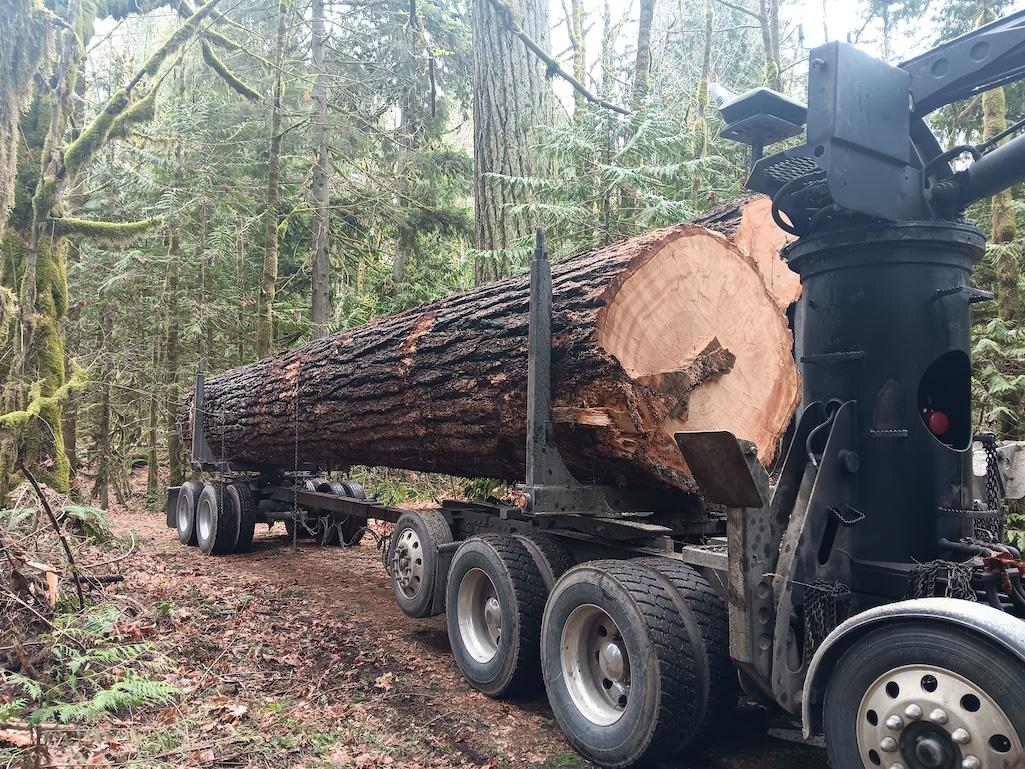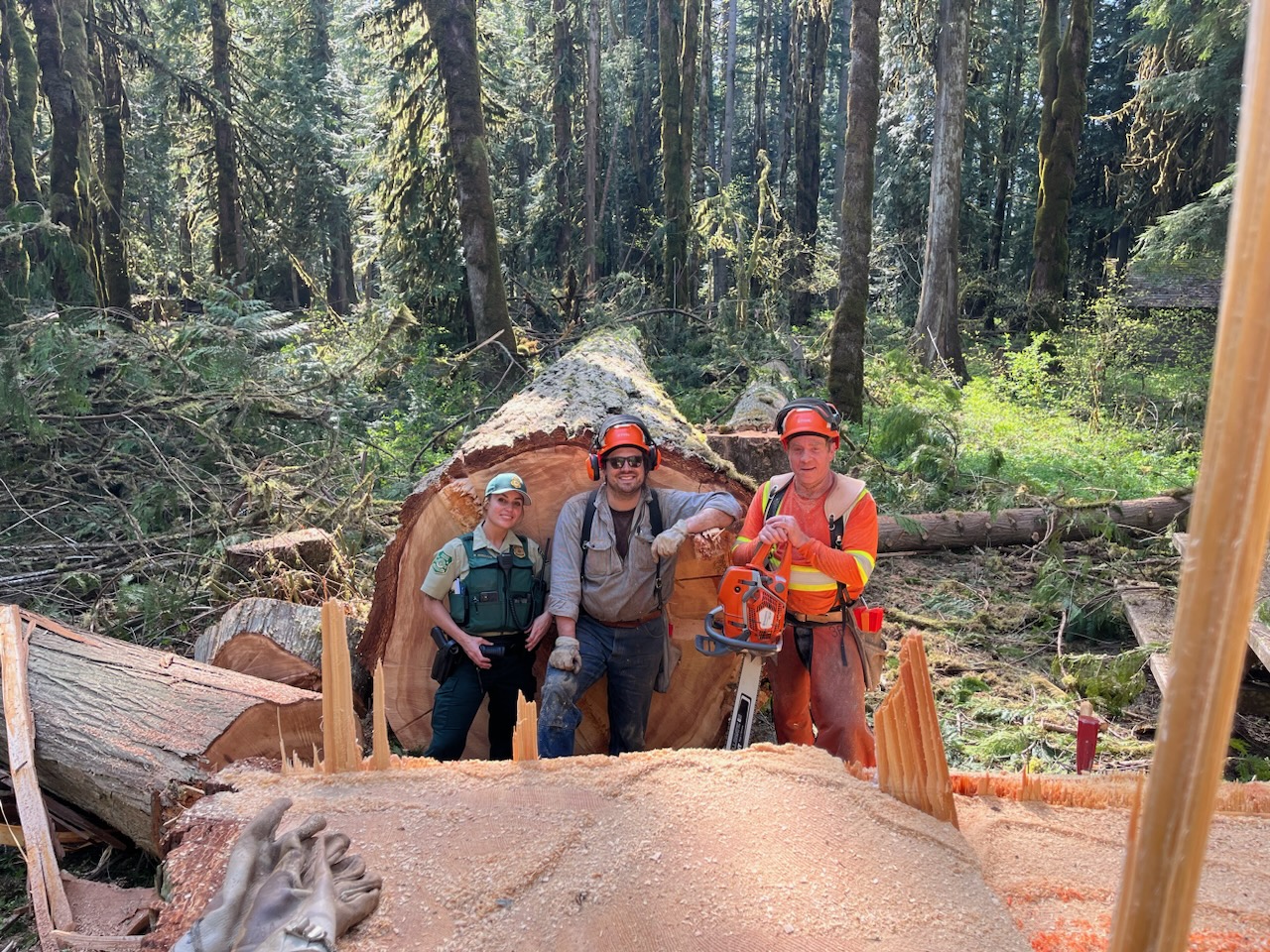
The lumber schooner, C. A. THAYER, stranded at Gray's Harbor in 1903/NPS
Editor's note: The following article came from the Mount Baker-Snoqualmie National Forest staff.
When it came time to restore a late-19th century schooner at San Francisco Maritime National Historical Park, the National Park Service placed a call to the U.S. Forest Service.
The ship is the C.A. Thayer, a vessel that first launched in 1895 by Hans Ditlev Bendixsen in Fairhaven, California, a with a crew of 4 seamen, two mates, a cook, and a captain. She was used to carry lumber from the Puget Sound into San Francisco and Los Angeles, and even made voyages as far as Australia. The wooden-hulled, three-mast schooner is routinely restored as part of preventive maintenance, but finding the right size and dimensions for lumber can prove challenging and costly.
A few trees from the Money Creek Campground proved to be just what the C.A. Thayer needed to get back into mint condition. Through a Federal Free to Use request from the San Francisco Maritime National Park Service, the Mount Baker-Snoqualmie National Forest was able to donate the trees for the ship’s restoration. A Federal Free to Use request by the National Park Service can be used under FS manual 2462.2, part 7a, where a regional forester can grant free use of National Forest System timber to other agencies. Timber can be donated in this way if local needs, individual forest protections, and National Environmental Policy Act provisions have been satisfied.

Trees felled in the Mount Baker-Snoqualmie National Forest for San Francisco Maritime National Historical Park/MBS Forestry Technician Cameron Elias
The Cedar and Douglas Fir were felled in the Money Creek Campground by MBS employees after it was concluded that the trees were a hazard in the campground due to root rot. Their time on the forest might have been coming to an end, but a second life was waiting. Historic preservation of the fleet vessels in the San Francisco Bay required unique dimensions for planks, 4” thick by 16” wide by 40’ long, and the felled trees had all the right measurements.
Being able to donate an old growth tree for a restoration project on a national park was a great situation for everyone involved. The San Francisco Maritime National Park can keep their ships restored with the right size lumber and we were able to ensure that two of our beloved trees get a second life. Removal without waste and a safe campground for our visitors all wrapped up into one project. What a beautiful ending, and second beginning.

Felling crew with downed logs (cedar to the left, and Douglas fir behind crew). Photo provided by MBS Forestry Technician Cameron Elias
Additional notes:
Old growth forests are also known as primary forests, mature forests, frontier forests, and/or virgin forests. You can expect to find a high level of complexity in old growth forests which leads to a lot of unique microhabitats and high biodiversity. Mature and old growth stands can offer other benefits like carbon sequestration, beauty, soil productivity, and diverse cultural and tribal values. Like other types, old growth forests are being affected by climate change. The mature and old growth initiative is part of an overarching climate-informed strategy aimed at protecting our forests and combating climate-related impacts.
The Money Creek Campground is situated on the banks of the South Fork Skykomish River, near the Miller River/Money Creek Winter Sports Area and Stevens Pass Historic District. The campgrounds offer tent and RV camping, picnic tables, vault toilets, and drinking water. In addition to the amenities, these grounds are home to popular recreation like skiing and snowshoeing in the winter months, and hiking, fishing, and biking during warmer weather. Interpretive programs and exhibits at the Mt. Rainier and North Cascades National Parks also draw visitors to the area, where they can learn about the diverse landscape and history of the area.

 Support Essential Coverage of Essential Places
Support Essential Coverage of Essential Places







Comments
Glad to see this. To bad Wapama couldn't be saved. As a young teen, working a summer job at my father's Beach St. office, I often took lunch aboard the Thayer or Wapama. The smell of the Thayer's hold is forever etched in my mind and I still smell her if the conditions are right.
Did a better job on that one. After the debacle of the steam schooner Wapama.